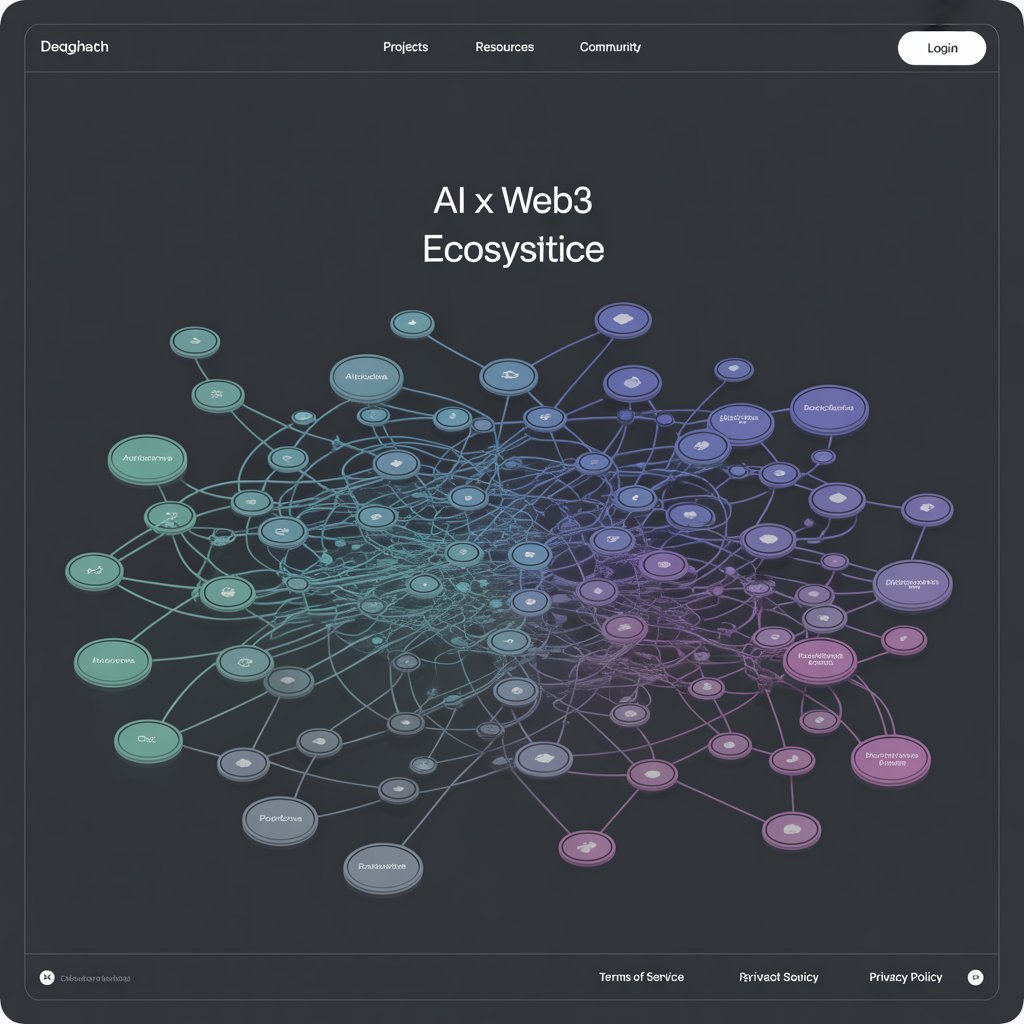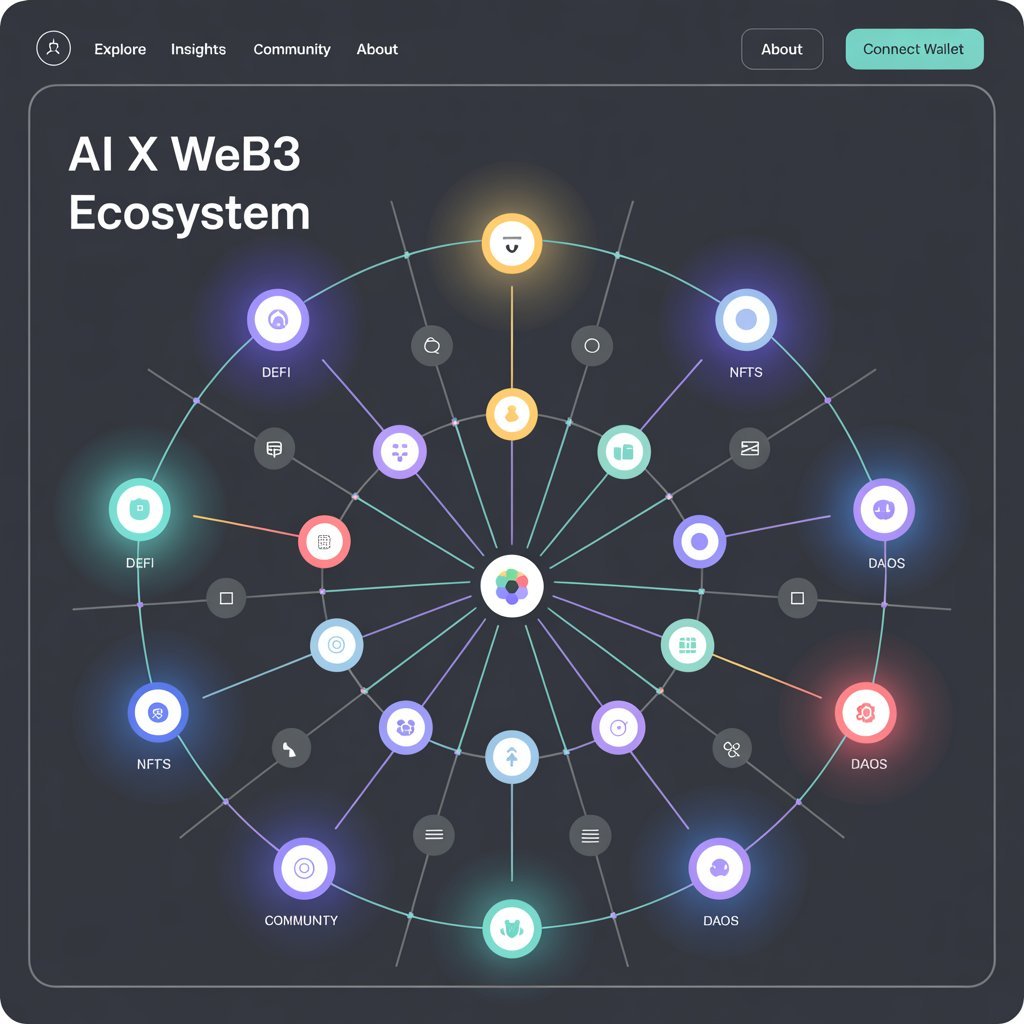Introduction
AI is transforming Web3 in 2025—autonomous agents, decentralized AI, and smart wallets are reshaping dApps, DeFi, and DAOs at lightning speed.
From decentralized AI networks to autonomous agents running smart contracts, the AI-Web3 convergence is fueling a wave of innovation that’s pushing boundaries and setting the stage for a smarter, more efficient decentralized internet.
Key Developments in AI x Web3 Integration
🔐 Decentralized AI: Security, Privacy & Verifiability
One of the most compelling innovations is the rise of decentralized AI—machine learning models that are hosted and executed across blockchain networks. Unlike traditional AI models controlled by single entities, decentralized AI promotes:
- Data privacy through cryptographic verification
- Transparency via on-chain logic
- Immutable training models, ensuring no tampering
Projects like Qubetics’ QubeQode exemplify this trend. Their AI-powered low-code platform allows users to create smart contracts without in-depth programming knowledge—democratizing development and making Web3 more inclusive.
“AI isn’t just a tool in Web3—it’s becoming an infrastructure layer itself,” noted a recent NASSCOM report.
🤖 AI Agents: The New Workforce of Web3
AI agents, or “Agentic AIs,” are autonomous software programs designed to achieve specific goals with minimal human oversight. These agents are increasingly being deployed for:
- Automated staking strategies
- Real-time DeFi trading
- Smart contract audits
- dApp deployment & maintenance
Their role is rapidly expanding. For example, some DAOs now use AI agents for governance participation, automating proposal analysis and voting behavior based on token-holder preferences.
As Cointelegraph reported, this model of “AI-augmented DAOs” could radically improve decision-making and efficiency across decentralized organizations.
⚡ Scalability and UX: AI-Powered Solutions
Web3’s biggest hurdles—scalability and user experience—are being tackled head-on by AI.
- Transaction Optimization: AI predicts congestion and reroutes transactions using cost-effective alternatives.
- AI Wallets: Smart wallets now offer predictive prompts, recommend DeFi products, and even prevent common errors (like sending funds to the wrong chain).
- Onboarding Simplification: New platforms use AI to onboard users through interactive chatbots, eliminating complex seed phrase and wallet setup processes.
These solutions make it easier for mainstream users to navigate DeFi, NFTs, and dApps—paving the way for mass adoption.
⚖️ Regulatory Outlook: Balancing Innovation with Ethics
As this convergence accelerates, regulatory oversight is becoming essential. On June 9, 2025, the U.S. SEC held a DeFi roundtable to explore how AI and decentralized finance intersect.
Key regulatory concerns included:
- AI’s potential for algorithmic manipulation
- Lack of explainability in AI decisions affecting user assets
- Data sovereignty and cross-border compliance
The event highlighted a shared goal among regulators and developers: enabling innovation while safeguarding users. Expect clearer AI-Web3 compliance frameworks by late 2025.


Future Outlook: What Lies Ahead
🌍 Emerging Use Cases
The AI-Web3 merger is already shaping:
- Finance: Algorithmic yield farming, credit scoring on-chain
- Gaming: AI-powered NPCs in blockchain games
- Social Platforms: Moderation, content curation, and even creator monetization through AI-generated assets
🚀 Acceleration in Adoption
By abstracting away complexity, AI makes Web3 more approachable. As interfaces evolve into intelligent assistants, even non-tech users can interact with DeFi protocols or mint NFTs without prior blockchain knowledge.
⚠️ Challenges to Watch
Despite the progress, this convergence isn’t without obstacles:
- Technical Complexity: Building secure, reliable AI agents remains a high-barrier endeavor
- Centralization Risks: If few firms control the most advanced AI models, decentralization could be undermined
- Regulatory Ambiguity: Without clear global frameworks, innovation could be stifled by fear of compliance failures
Conclusion
The convergence of AI and Web3 is more than a technological trend—it’s a foundational shift in how we build, automate, and trust decentralized systems. By enhancing intelligence, automating tasks, and improving scalability, AI is helping Web3 mature beyond speculation into a practical, user-first ecosystem.
As we move deeper into 2025, the partnership between AI and Web3 will continue to unlock value across industries—from gaming and finance to governance and privacy. Those who embrace this transformation early will be the architects of a smarter, more inclusive digital future.
DeFi in 2025: Real-World Asset Tokenization, SEC Talks & Security Challenges


